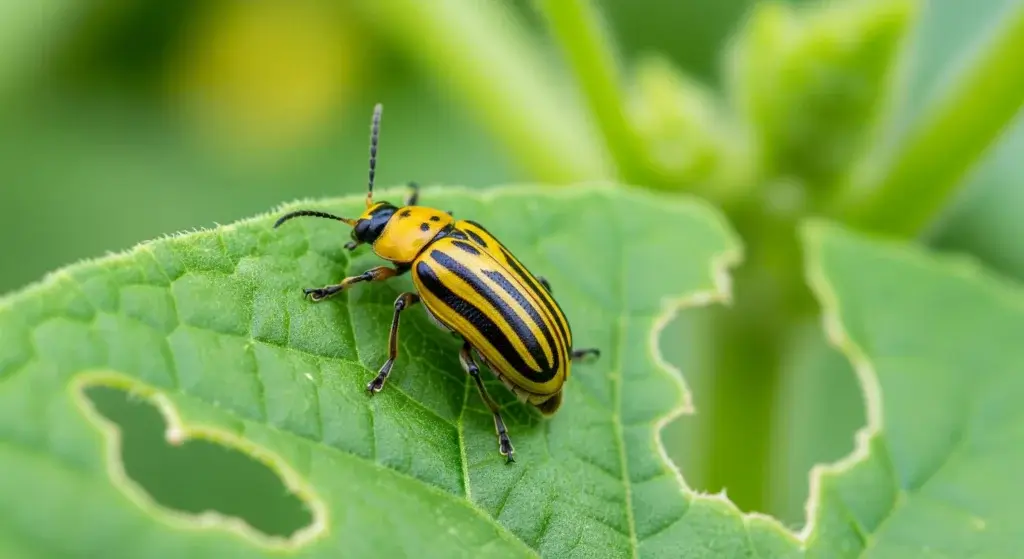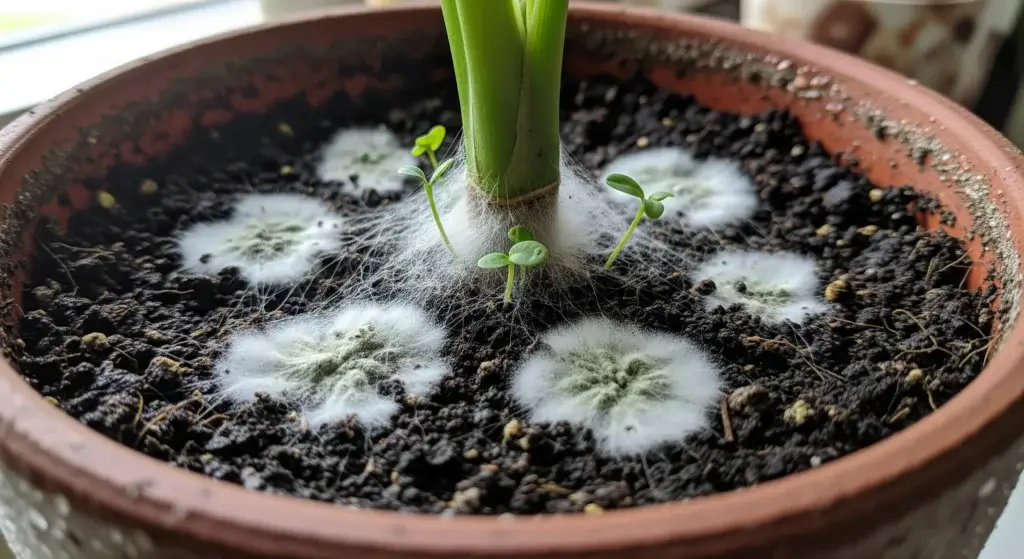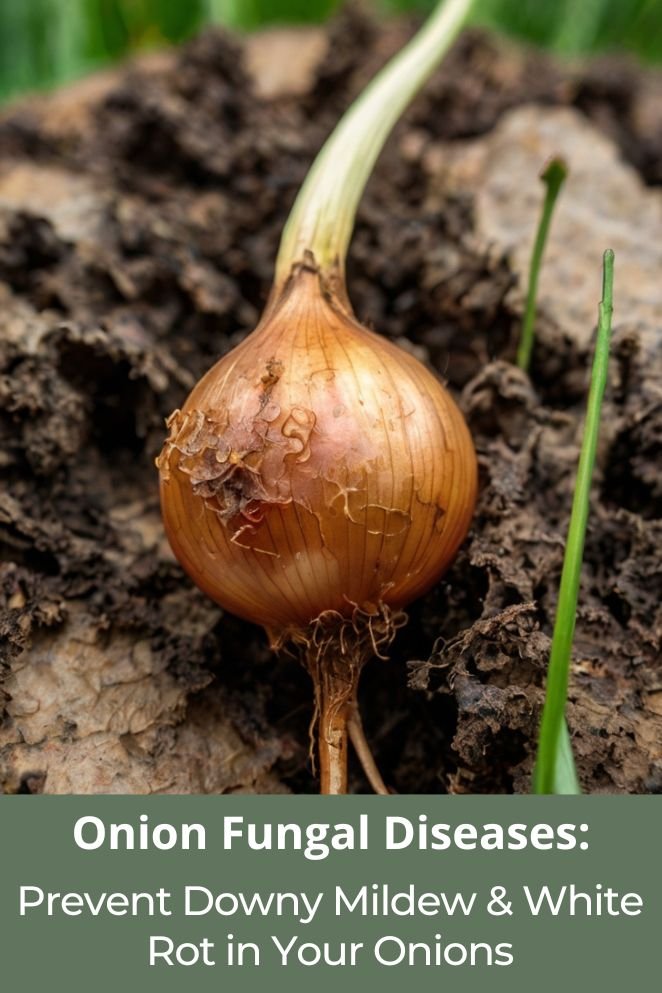
Onion cultivation faces significant challenges from fungal diseases that can devastate entire crops within days if left uncontrolled.
Among the most destructive are downy mildew and white rot, two pathogens that have plagued onion growers worldwide for decades.
Understanding these diseases and implementing effective prevention strategies is crucial for maintaining healthy onion crops and ensuring profitable harvests.
Understanding Onion Fungal Diseases
Fungal diseases represent one of the most serious threats to onion production globally.
These microscopic organisms thrive in specific environmental conditions and can spread rapidly through fields, causing substantial economic losses.
The key to successful onion cultivation lies in recognizing early symptoms, implementing preventive measures, and maintaining optimal growing conditions that discourage fungal development.
Downy Mildew: The Silent Destroyer
What Causes Downy Mildew in Onions
Downy mildew in onions is caused by Peronospora destructor, a fungus-like organism belonging to the Oomycete family.
This pathogen first infects the leaves and later bulbs of onions, becoming worse in cool wet seasons and in wet areas.
Despite its name suggesting a fungal origin, downy mildew is actually caused by water molds that share characteristics with both fungi and algae.
The pathogen survives in soil and infected plant debris, waiting for favorable conditions to activate.
When temperature and moisture levels align perfectly, Peronospora destructor can spread explosively through onion fields, earning its species name “destructor” due to its devastating potential.
Recognizing Downy Mildew Symptoms
Early detection of downy mildew symptoms is critical for effective management.
The disease typically begins as pale green or yellowish streaks on onion leaves, which gradually expand and turn brown or purple.
During humid conditions, a fuzzy, grayish-white growth becomes visible on the undersides of infected leaves, particularly in the early morning hours when dew is present.
As the disease spreads, the leaves start to twist, shrink, and flop over like they’ve just given up on life.
If you don’t catch it early, the infection can travel through the whole plant, hitting the bulb hard—meaning smaller harvests and onions that won’t last long in storage.
In bad cases, it can wipe out an entire field in days.
It’s the plant version of a zombie outbreak—spot it early, or risk losing everything.
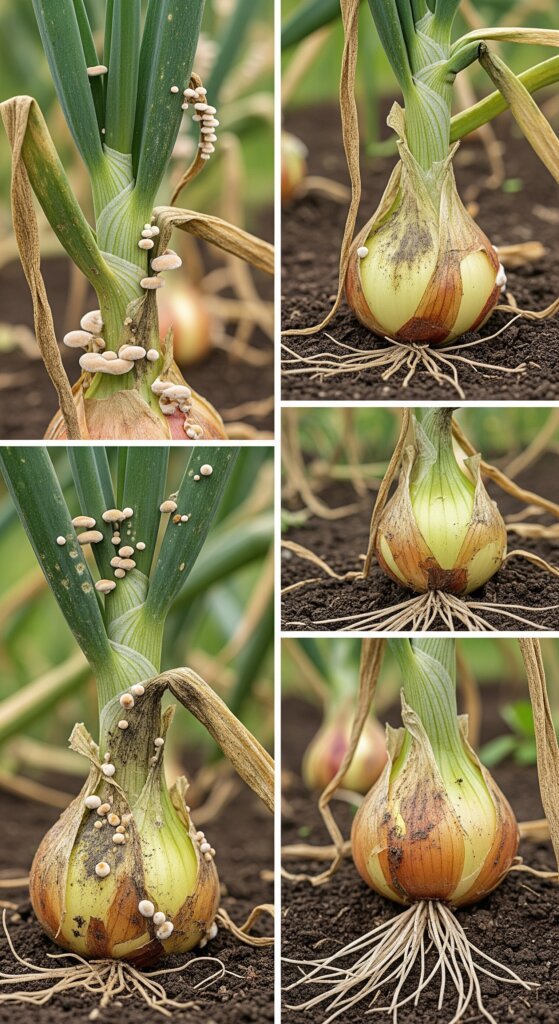
Environmental Conditions Favoring Downy Mildew
Downy mildew is basically that clingy ex—it shows up when it’s cool (50–70°F), damp, and everything’s just a little too cozy.
If humidity hits over 85% and leaves stay wet from rain, dew, or too much watering, the spores say, “Let’s party.”
It spreads by wind and water splash, especially in crowded plant setups.
If your onions are packed tighter than a rush-hour subway, they’re at higher risk.
Add in poor airflow, too much nitrogen, and overhead sprinklers, and you’ve basically rolled out the red carpet for this disease.
White Rot: The Persistent Threat
If you grow onions, garlic, leeks, or chives—white rot is your worst nightmare.
It’s a hardcore fungal disease (caused by Sclerotium cepivorum) that wrecks roots and bulbs, turns leaves yellow and floppy, and eventually melts your plants into mush.
And the worst part? It leaves behind tiny black survival pods called sclerotia that can chill in your soil for 20+ years.
Yeah… it’s basically the Voldemort of onion diseases.
How to spot it
First clue: older leaves start yellowing and wilting.
Then—bam—you’ll see white, fluffy fungus growing around the base of the bulb, like your onion’s wearing a moldy sweater.
Look closer and you’ll probably see little black specks (sclerotia) stuck to the bulb.
If you cut it open, the bulb’s soft and rotting from the bottom up. At that point? Damage is already done.
How it works
Sclerotia in the soil just sits there—sometimes for decades—waiting for an Allium root to show up.
The root gives off a signal (“Hey, I’m an onion!”), and the sclerotia wake up, grow mycelium, and attacks.
Moist soil? Even better for the fungus.
Once inside, it spreads fast, ruins the bulb, and drops a new batch of sclerotia back into the soil like it’s respawning for another round.
Why it’s so hard to kill
Once your soil’s infected, even rotating crops won’t fix it.
Fungicides help, but they’re expensive, and prevention is way smarter.
Treat any white rot outbreak like a quarantine situation—clean tools, toss infected plants, and never move soil from a sick bed to a clean one.
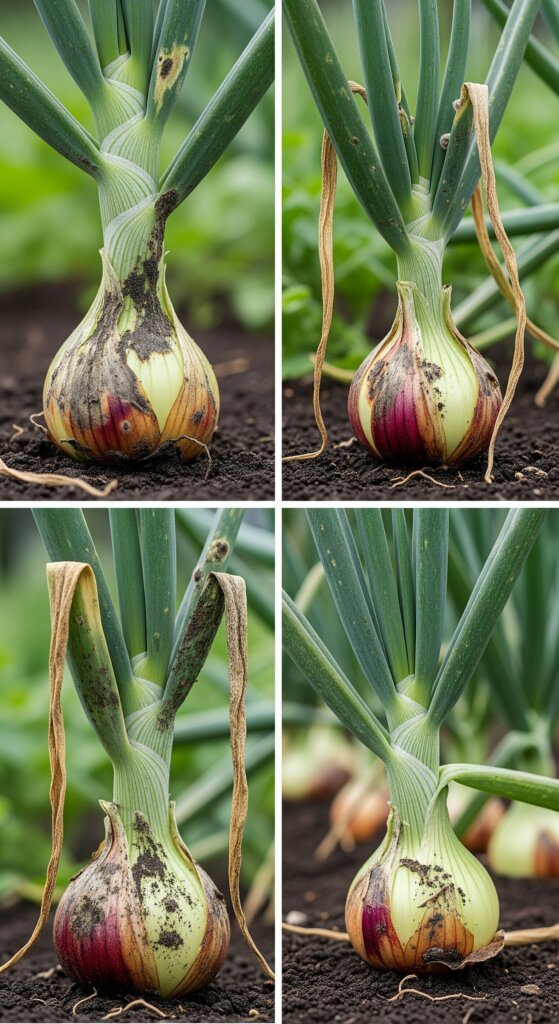
Comprehensive Prevention Strategies
Cultural control methods
Want to beat downy mildew and white rot without going full Breaking Bad on your onions? It all starts with how you grow.
Here’s how to play smarter, not harder.
Crop rotation and field selection
For downy mildew, do a 3-year break from anything in the Allium crew (onions, garlic, leeks).
For white rot? You’ll need a serious cooldown—15 to 20 years. Yeah, white rot holds grudges.
Pro tip: Don’t reuse sketchy beds. Pick fields with good airflow and drainage. Avoid low spots where water pools—fungi love a mud spa.
Irrigation management
Sprinklers are fungus BFFs.
If you have to use them, time it so leaves dry fast—morning waterings, not evening Netflix-style soakings.
Even better? Use drip irrigation.
It’s like a hydration IV straight to the roots—no soggy leaves, no humid jungle vibes.
Planting practices
Line up your rows with the wind to keep air moving through your crop like a fan at a sweaty gym.
Less moisture = fewer fungal parties.
Don’t crowd your plants, either. Give them elbow room.
Tighter spacing traps moisture and turns your onion bed into a disease rave.
Sanitation and hygiene
If you want to keep downy mildew and white rot out of your onion patch, clean growing is key.
Think of it like biosecurity for your garden—no shortcuts.
Clean planting material
Always plant with clean, disease-free bulbs, sets, or seed.
Don’t grab the sketchy stuff from mystery bins.
Go certified, buy from trusted sources, and check everything like TSA checks a suspicious carry-on. If it looks weird, toss it.
Field sanitation
After harvest, treat your field like it just hosted a pathogen party.
Rip out everything—old bulbs, dead leaves, rogue volunteers, even that one onion that was “kinda still good.”
Don’t compost infected debris unless you want spores in next year’s salad.
Soil management strategies
Want healthy onions and fewer fungal freak-outs? Start with the soil.
Downy mildew and white rot hate a strong foundation—so let’s give your plants one.
Soil health and drainage
Soggy soil is a fungal love nest.
Fix poor drainage with field prep and, if needed, install drainage tiles.
Got compacted soil? Loosen it up so roots can breathe and water doesn’t pool like it’s throwing a backyard rave for spores.
Organic matter and composting
Add well-composted organic matter—not just for fluff.
Good compost boosts structure, holds moisture right, and feeds helpful microbes that bully the bad guys.
It’s like building a fungal fight club… but underground.
Biological control options
Researchers are getting hyped about using good microbes to beat the bad ones.
Some bacteria and fungi go full Mortal Kombat on white rot and downy mildew—blocking them, outcompeting them, or even triggering your plants to toughen up.
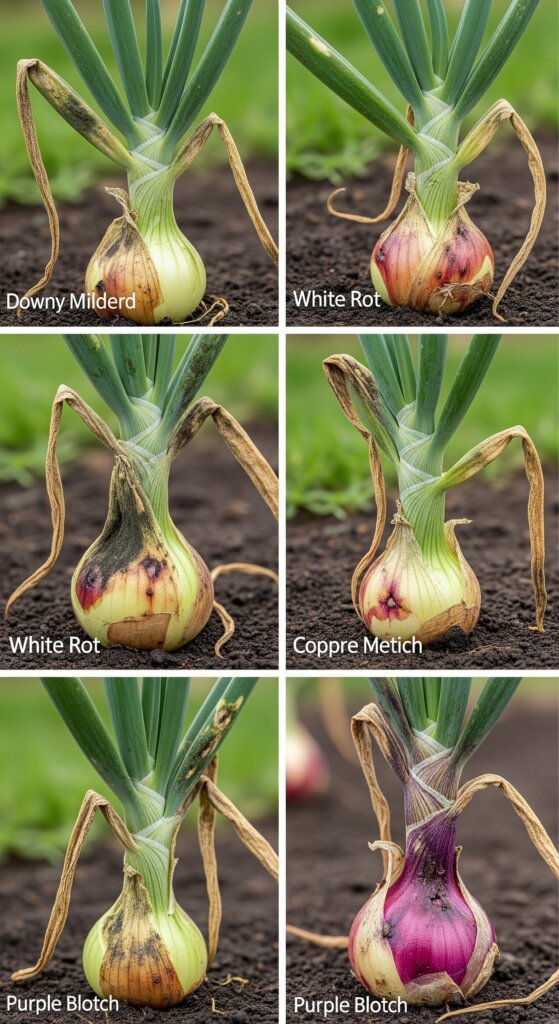
Integrated Disease Management
If you want to keep your onions alive and thriving, you’ve gotta play defense like it’s the championship game.
No single trick will save your crop—this is a full-team strategy.
Monitoring and early detection
Check your field every week, especially when your onions are in full growth mode.
Focus on the shady spots, low areas, or anywhere plants are packed tight like a crowd at a Taylor Swift concert.
That’s where fungi love to hide.
Track the weather too.
If temps and humidity line up with what downy mildew or white rot loves? That’s your cue to step up scouting and prep your counterattack.
Chemical control considerations
If your cultural and bio controls can’t keep up, it’s okay to call in the chemical reinforcements.
But don’t go spraying the same thing over and over like a broken record.
That’s how resistance starts—and then your fungicide becomes useless, like a phone with 1% battery.
Pro tip: Rotate chemical classes. Mix it up. Follow labels. And don’t lean on sprays as your only plan—treat them like a backup dancer, not the lead singer.
Resistance management
Fungicide resistance is real. Want to avoid creating a mutant spore army?
Rotate products with different modes of action, skip back-to-back sprays of the same stuff, and always pair fungicides with smart growing practices.
Final Take: Outsmart Fungi Before They Outsmart You
Beating downy mildew and white rot isn’t about one magic trick—it’s about stacking smart moves.
Rotate crops, manage water, clean your fields, scout often, and know your enemy (yes, spores have a game plan).
Preventing disease is way cheaper—and way less heartbreaking—than trying to fix it after your onions start flopping over like drama queens in a soap opera.
Do the work up front, and you’ll get bigger harvests, better bulbs, and less dependence on pricey fungicides.
With research dropping new tools all the time, the future’s looking good—as long as you’re ready to grow smart.


